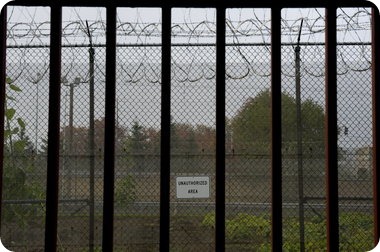In October of 1990, I heard a prison cell door clang shut behind me for the first time. Reality struck. Time stopped. It was easier for me than for many, because I served only nine years. Ever since I have searched for ways to convey the experience to others, who have not been there themselves. I never could do so to my complete satisfaction, but in a recent article, Adam Gopnik has. Here is a very small part of it:
A prison is a trap for catching time. Good reporting appears often about the inner life of the American prison, but the catch is that American prison life is mostly undramatic—the reported stories fail to grab us, because, for the most part, nothing happens. One day in the life of Ivan Denisovich is all you need to know about Ivan Denisovich, because the idea that anyone could live for a minute in such circumstances seems impossible; one day in the life of an American prison means much less, because the force of it is that one day typically stretches out for decades. It isn’t the horror of the time at hand but the unimaginable sameness of the time ahead that makes prisons unendurable for their inmates. The inmates on death row in Texas are called men in “timeless time,” because they alone aren’t serving time: they aren’t waiting out five years or a decade or a lifetime. The basic reality of American prisons is not that of the lock and key but that of the lock and clock.
That’s why no one who has been inside a prison, if only for a day, can ever forget the feeling. Time stops. A note of attenuated panic, of watchful paranoia—anxiety and boredom and fear mixed into a kind of enveloping fog, covering the guards as much as the guarded. “Sometimes I think this whole world is one big prison yard, / Some of us are prisoners, some of us are guards,” Dylan sings, and while it isn’t strictly true—just ask the prisoners—it contains a truth: the guards are doing time, too. As a smart man once wrote after being locked up, the thing about jail is that there are bars on the windows and they won’t let you out. This simple truth governs all the others. What prisoners try to convey to the free is how the presence of time as something being done to you, instead of something you do things with, alters the mind at every moment. For American prisoners, huge numbers of whom are serving sentences much longer than those given for similar crimes anywhere else in the civilized world—Texas alone has sentenced more than four hundred teen-agers to life imprisonment—time becomes in every sense this thing you serve…
Inserted from <The New Yorker>
I urge you to click the link and read the entire article, especially if you think that prison is somehow like a country club. You may think that prisoners deserve abuse, or that it just does not matter to you, but it does. Almost every person locked behind bars will be released. They will walk your streets. They will live in your neighborhoods. The quality of care and opportunities for prisoners to rebuild themselves, as productive citizens, who obey the law, has a direct effect on your safety and that of your family. If you can’t support making prisons places to restore people, because it’s the right thing to do. do it because it’s the selfish thing to do.
 The district attorneys of Multnomah, Washington and Clackamas counties recently dropped by to complain that we’ve been awfully critical of public-safety policies that have, after all, seen crime plunge to the lowest level in 40 years.
The district attorneys of Multnomah, Washington and Clackamas counties recently dropped by to complain that we’ve been awfully critical of public-safety policies that have, after all, seen crime plunge to the lowest level in 40 years.